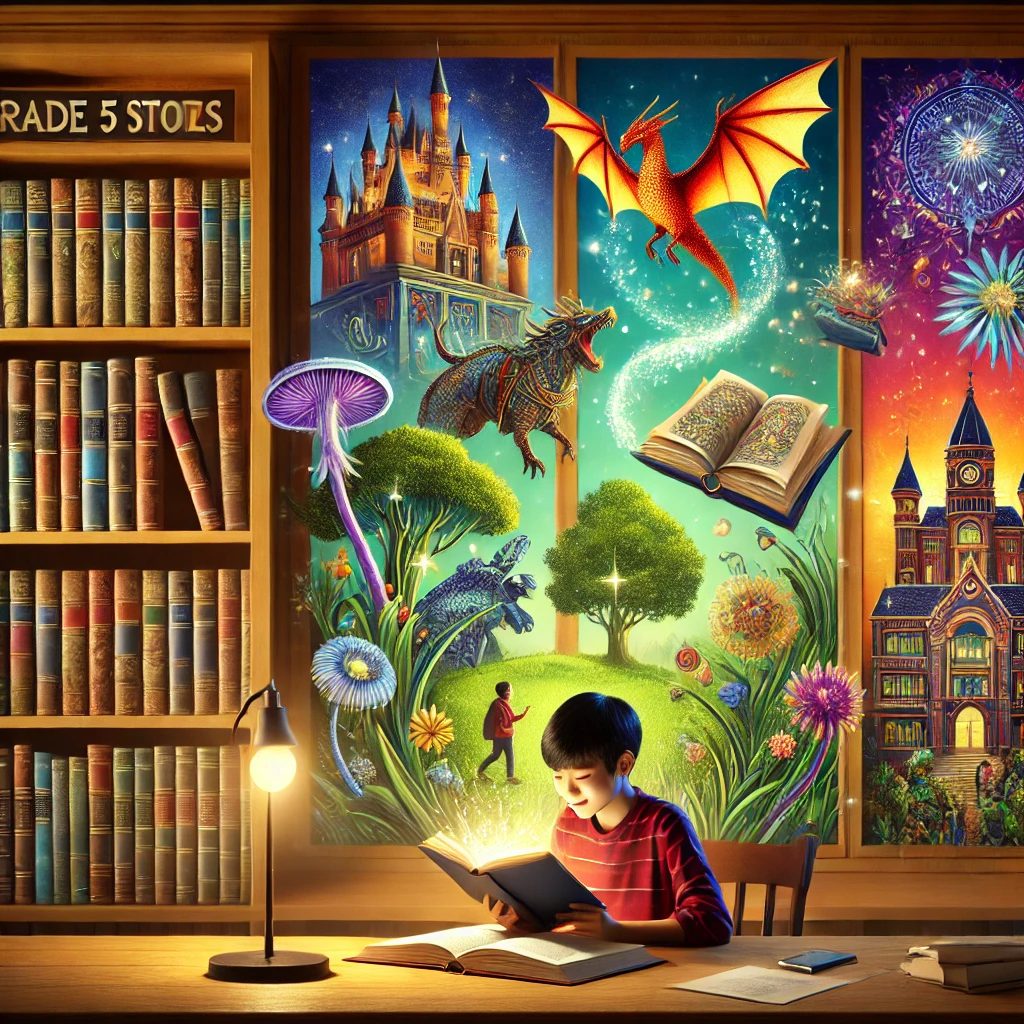Unlocking Imagination: Engaging Stories for Grade 5 with Cambridge 5

Grade 5
Table of Contents
The Cambridge 5 curriculum is designed to foster creativity and critical thinking in young learners, particularly through storytelling. Stories play a crucial role in education, helping students develop their language skills, imagination, and understanding of different cultures. In this article, we will explore the significance of storytelling in the Cambridge 5 program, highlight some engaging stories suitable for Grade 5, and provide resources for both students and educators.
The Importance of Storytelling in Education
Storytelling is more than just a form of entertainment; it is a powerful educational tool that enhances learning in various ways:
- Language Development: Stories expose students to new vocabulary and sentence structures, improving their reading and writing skills. Engaging with narratives helps children understand language in context, making it easier to grasp complex concepts.
- Critical Thinking: Analyzing stories encourages students to think critically about themes, characters, and plot developments. They learn to ask questions, make predictions, and draw conclusions, skills that are essential for academic success.
- Cultural Awareness: Stories from different cultures introduce students to diverse perspectives and experiences. This fosters empathy and understanding, preparing them for a globalized world.
- Imagination and Creativity: Engaging with stories stimulates creativity, allowing students to envision different worlds and scenarios. This imaginative play is crucial for cognitive development.
Engaging Stories for Grade 5
Here are some captivating stories that align with the Cambridge 5 curriculum and are perfect for Grade 5 students:
- “The Secret Garden” by Frances Hodgson Burnett: This classic tale of transformation and friendship follows a young girl, Mary Lennox, as she discovers a hidden garden. The story emphasizes themes of healing, nature, and the power of friendship. Educators can find lesson plans and activities related to this book on Scholastic.
- “Charlotte’s Web” by E.B. White: A heartwarming story about the friendship between a pig named Wilbur and a spider named Charlotte. This narrative teaches valuable lessons about loyalty, sacrifice, and the cycle of life. For discussion questions and activities, visit ReadWriteThink.
- “The Chronicles of Narnia: The Lion, the Witch and the Wardrobe” by C.S. Lewis: This fantasy adventure takes readers to the magical land of Narnia, where four siblings embark on a quest to defeat the White Witch. The themes of bravery, good versus evil, and redemption resonate well with young readers. Check out Common Sense Media for age-appropriate reviews and resources.
- “Holes” by Louis Sachar: This unique story weaves together the past and present as a boy named Stanley Yelnats digs holes in a juvenile detention camp. The narrative explores themes of fate, friendship, and perseverance. Teachers can find engaging activities related to “Holes” at Teachers Pay Teachers.
- “Wonder” by R.J. Palacio: A modern classic, “Wonder” tells the story of Auggie Pullman, a boy with facial differences who navigates school and friendships. The book promotes kindness, acceptance, and empathy. Visit Scholastic for resources and discussion guides.
Resources for Educators and Students
To support the teaching of these stories and enhance the learning experience, here are some valuable resources:
- Cambridge Assessment International Education: Offers a range of materials and support for educators implementing the Cambridge curriculum. Visit their website for more information: Cambridge International.
- Storytelling Websites: Platforms like Storyline Online provide free access to videos of actors reading children’s books, making storytelling accessible and engaging for students.
- Interactive Reading Apps: Apps such as Epic! and Book Creator allow students to explore a vast library of stories and create their own, fostering creativity and engagement.
- Library Resources: Encourage students to visit their local libraries for story hours and reading programs. Libraries often have dedicated sections for Grade 5 readers, offering a variety of engaging books.
Tips for Encouraging Storytelling at Home
Parents and educators can work together to nurture a love for storytelling in children. Here are some tips:
- Read Together: Set aside time each day for reading. Choose a mix of classic and contemporary stories to expose children to different writing styles and genres.
- Discuss the Stories: After reading, engage children in discussions about the plot, characters, and their thoughts on the story. This helps develop critical thinking skills.
- Encourage Creative Writing: Provide prompts or themes for children to create their own stories. This can be a fun family activity that sparks imagination.
- Visit Storytelling Events: Look for local storytelling events or festivals. These can provide children with the opportunity to hear stories from different cultures and traditions.
Conclusion
The Cambridge 5 curriculum offers a transformative approach to education through storytelling. By engaging with captivating narratives, Grade 5 students can develop essential skills while exploring diverse cultures and ideas. As educators and parents, fostering a love for stories can unlock a world of imagination and creativity, empowering children to become confident readers and thinkers.





No comment